F-BTSD. Aerospatiale Concorde 101. c/n 213.
Was also registered as: F-WJAM; N94SD.
This aircraft was built by built by Societe Nationale Industrielle Aerospatiale, (Aerospatiale), Toulouse, France. It was entered onto the French Aircraft Register as F-WJAM and registered to Aerospatiale. It flew for the time from Toulouse on June 26, 1978. Its registration was changed to F-BTSD on September 14, 1978 and leased to Air France four days later on September 18, 1978. It was re-registered F-BTSD / N94SD to Air France / Braniff Airways on January 12, 1979 to comply with American registration requirements for the operation of the aircraft across continental United States. Following the aircraft's arrival at New York / Washington DC from Paris, the aircraft was used by Braniff Airways to fly its Washington DC - Dallas Fort Worth service and return. Use of this aircraft was short-lived on the route as it was reregistered F-BTSD on March 12, 1979 and returned to Aerospatiale. It was leased again to Air France on May 9, 1980. F-BTSD was purchased by Air France and registered to Compagnie Nationale Air France on October 23, 1980. Its ownership was officially transferred to Groupe Air France on June 9, 1993. F-BTSD holds the world record for the fastest flights around the world in both directions. The westbound route, flying Lisbon - Santo Domingo - Acapulco - Honolulu - Guam - Bangkok - Bahrain - Lisbon on October 12 - 13, 1992 took 32 hours, 49 minutes and 03 seconds. The eastbound route, flying New York JFK - Toulouse - Dubai - Bangkok - Guam (Andersen AFB) - Honolulu - Acapulco - New York JFK on August 15 - 16, 1995 took 31 hours, 27 minutes and 49 seconds. F-BTSD was painted in a special promotional 'Pepsi' livery in March 1996. As its market shares were eroding on the soft drinks market, the US company Pepsi Cola undertook a major re-branding project of $US 500 million which would be unveiled in 1996 after about two years of work. Pepsi therefore started to look around for a spectacular and efficient manner to advertise its new brand style and enhance its sales. It was eventually decided to have an advertisement operation involving the Concorde. Pepsi started requesting proposals from both Air France (AF) and British Airways (BA), the sole two Sud Aviation/BAC Concorde operators. Eventually, the French carrier was awarded the contract (of which terms were not disclosed). Because the new identity of Pepsi was based on the color blue, the aircraft would have to be painted alike. Therefore the Air France maintenance staff had to call Aerospatiale (successor of Sud Aviation) as the airplane, for which temperature is so important, was only certified with a white color scheme. They received approval to paint the fuselage in blue, but were advised to keep the wings in white (because of the fuel temperature). It was advised to remain at M2.02 for about 20 minutes at most, but there was no restriction under M1.70. This was not a concern for Air France as the aircraft was not due to operate any scheduled flights to New York's John F. Kennedy (JFK) Airport or any such long sector. A part of the preparation included the constitution of a maintenance package, necessary handling tools and ground equipment, etc., as for any unscheduled Concorde operation. Air France required its name to be kept close to the cockpit, as well as the seahorse despite the Pepsi scheme. This was an usual requirement from the airline, which was for the occasion very important as Concorde was due to be presented in British Airways' backyard. The Concorde registered F-BTSD (c/n 213) was selected for maintenance availability reasons. The paint work was started in late March 1996 at the Air France maintenance facility of Paris (Orly) Airport, where all airplanes go after their D-check to get a new livery. It required 200 liters of paint and 2,000 hours of work. The whole operation was to be undertaken secretly, as Pepsi wanted to keep all the surprise for the moment when it would unveil its new identity. 'Sierra Delta' was thus covered by brown wrapping paper after it was painted, so that as few people as possible would be aware of the event. It eventually left the hanger on March 31st at night, and was quickly rolled to the runway where it took off for London (Gatwick) Airport, where Pepsi had planned to receive its guests. The aircraft was immediately towed to the hanger after its arrival, and made ready for the show. And yet, a few days before the new brand was unveiled, Richard Branson had apparently heard about the advertisement operation, as new ads for the Virgin Cola soft drink appeared in the British press. A few articles about an Air France Concorde being repainted with a blue color scheme were reported in the newspapers. The show took place on April 2, 1996 with the presence of Claudia Schiffer, Andre Agassi, Cindy Crawford and hundreds of journalists invited by Pepsi for the event. People were really astonished to see the Concorde with the blue livery. Flight attendants each had a special pin on their uniform designed for the occasion. Afterwards 'Sierra Delta' started a promotion campaign in Europe and the Middle East. For the Pepsi commercial operation, there were a total of 16 flights (including the ferry flights from Orly) and 10 cities were visited. Each flight, except the first and last ones, would have been occasions to go supersonic. F-BTSD's Certificate of Airworthiness was cancelled on August 15, 2000 as a result of the crash of the Air France Concorde at Charles de Gaulle Airport, Paris on July 25, 2000. This accident resulted in all Concordes being grounded. F-BTSD was fitted with the 'return to flight' modifications that had been mandated by the aircraft's manufacturer and the relevant airworthiness authorities. On completion of these modification it was test flown at Paris Charles de Gaulle Airport on April 11, 2001 in preparation for its return to service. Six days later on April 17 F-BTSD was flown from Charles de Gaulle to Istres for tests on newly developed Michelin tyres that offered greater strength if they hit something sharp on the runway. Following these tests F-BTSD is returned to Paris (Orly) Airport on May 5, 2001 to visit the paint shop. With a new coat of paint it is flown back to its base at Charles de Gaulle on May 30. The tyre manufacturer Michelin announced on June 7, 2001 that the tyres that were tested at Istres on the French Concorde F-BTSD would be fitted to all Concordes when they returned to service. On September 5, 2001 Certificates of Airworthiness were returned to modified Concordes by the British CAA and French DGAC. The CAA and DGAC announced that once each Concorde had been modified, its Certificates of Airworthiness would also be returned. Tickets for Concorde services that were scheduled to recommence on November 7, 2001 went on sale on October 16, 2001. Sales were high and some flights were sold out in a matter of days. F-BTSD was the first Air France Concorde to re-enter service when it operated Flight AF002 Paris - New York (JFK) Airport on November 7, 2001 departing Paris at 10:30 am local time and arriving at New York JFK at 8:20 am EST. F-BTSD operated the final Air France Concorde flight Paris - New York as Flight AF002 on May 30, 2003, under the command of Captain Jean-Francois Michel with First Officer Patrick Delangle and Flight Engineer Bernard Collette assisting. The aircraft departed Paris at 10:40 am local and landed at New York at 9:15 am local. The routing was from Paris, overhead Caen, the English Channel, South of Ireland, North Atlantic, Sabre Island, Nantucket to New York. During this flight F-BTSD achieved a maximum speed of Mach 2.02 (approximately 1,350 mph) at the maximum height of 60,000 feet. The final Concorde flight from New York to Paris was operated as Flight AF001 by the same aircraft and crew on May 31, 2003. The aircraft departed New York at 8:15am local and landed at Paris at 4:30 pm local. F-BTSD was retired to the Le Bourget Air and Space Museum, Paris At the time of its retirement F-BTSD had flown a total of 12,974 hours with 5,135 cycles. It had flown 3,672 supersonic cycles. |
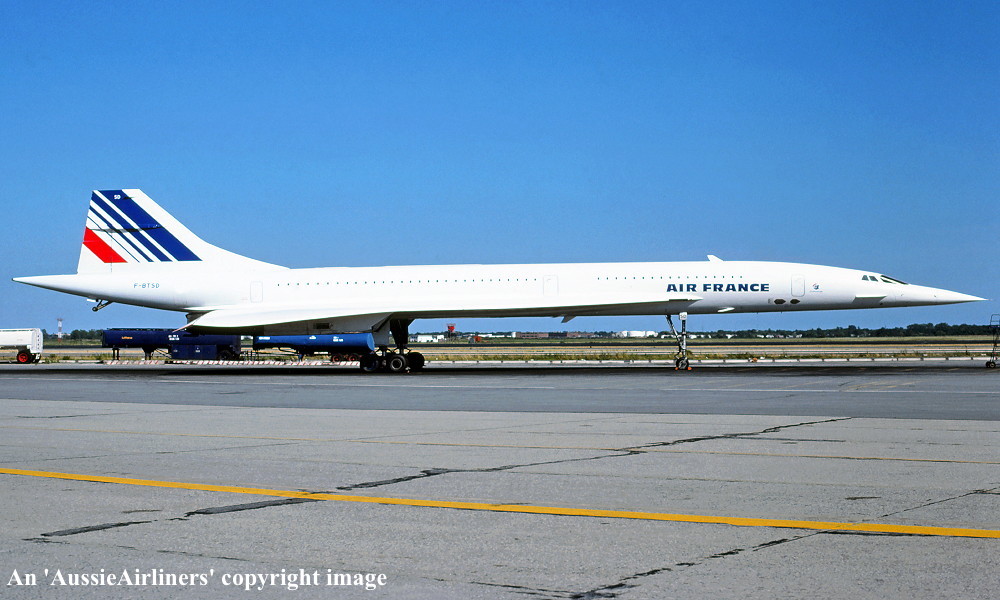 |
F-BTSD. Air France - in the old livery at Paris Charles de Gualle Airport Airport, June 1986. (R. N. Smith Collection Copyright Image 1926-004.) |
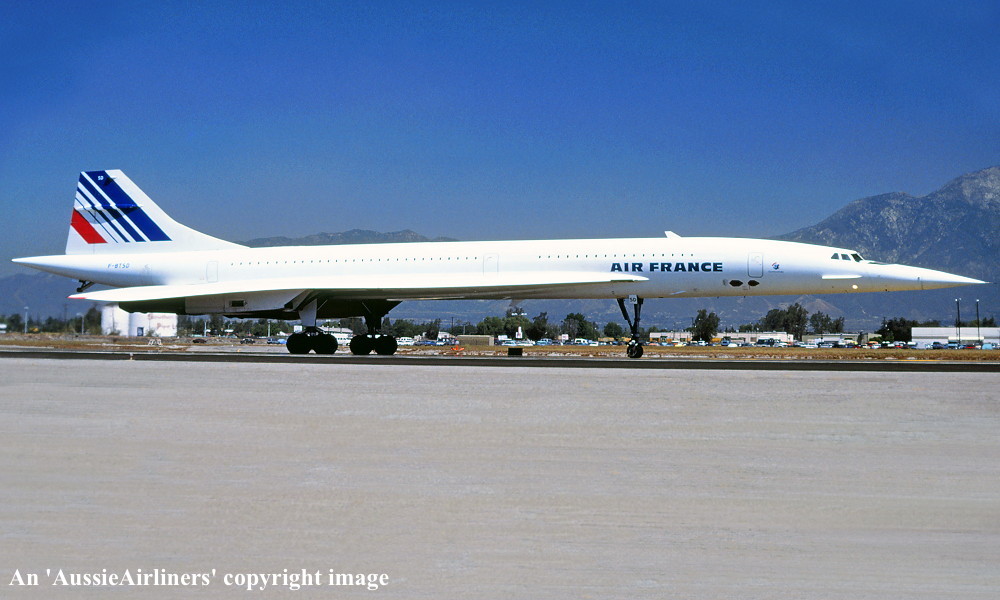 |
F-BTSD. Air France - in the old livery at an unknown airport Airport, May 05, 1987. (R. N. Smith Collection Copyright Image 1926-045.) |
 |
F-BTSD. Air France - in the final livery at Paris Charles de Gualle Airport Airport, June 1993. (R. N. Smith Collection Copyright Image 1926-027.) |
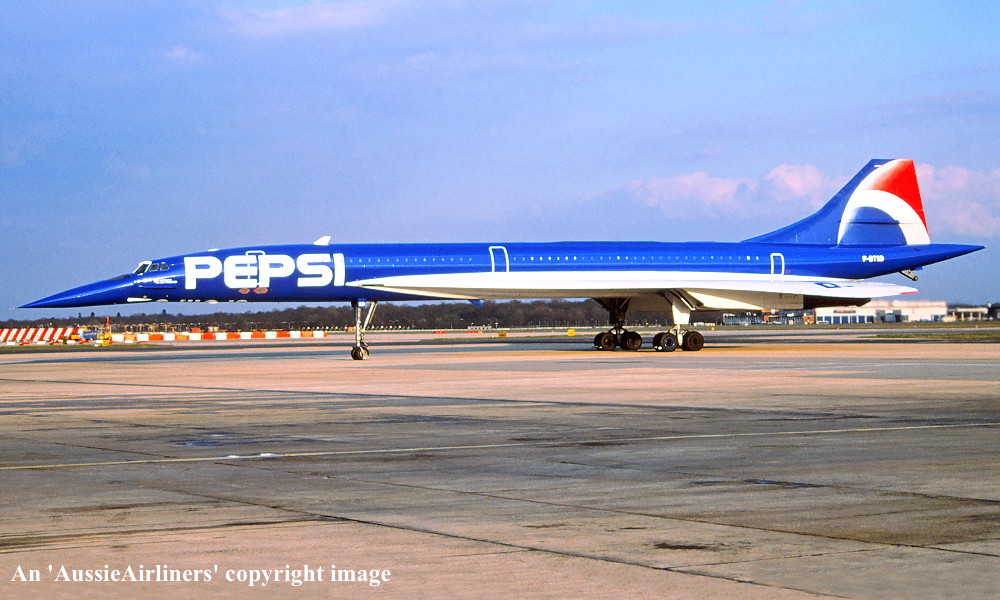 |
F-BTSD. Air France - in the 'Pepsi' livery at Paris Charles de Gualle Airport Airport, April 1996. (R. N. Smith Collection Copyright Image 1926-003.) |
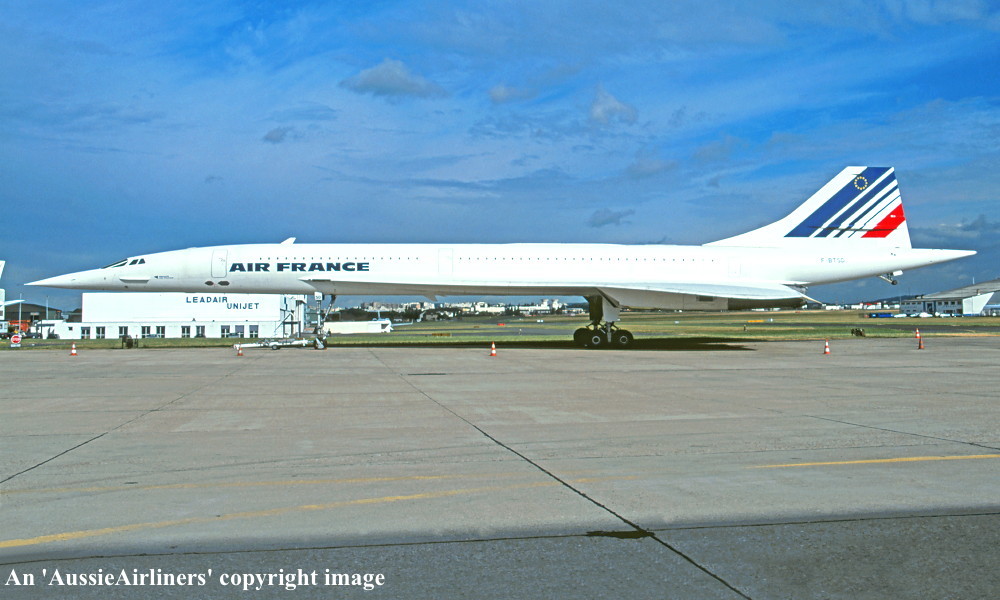 |
F-BTSD. Air France - in the final livery at Paris Charles de Gualle Airport Airport, July 02, 2003. (R. N. Smith Collection Copyright Image 1926-015.) |
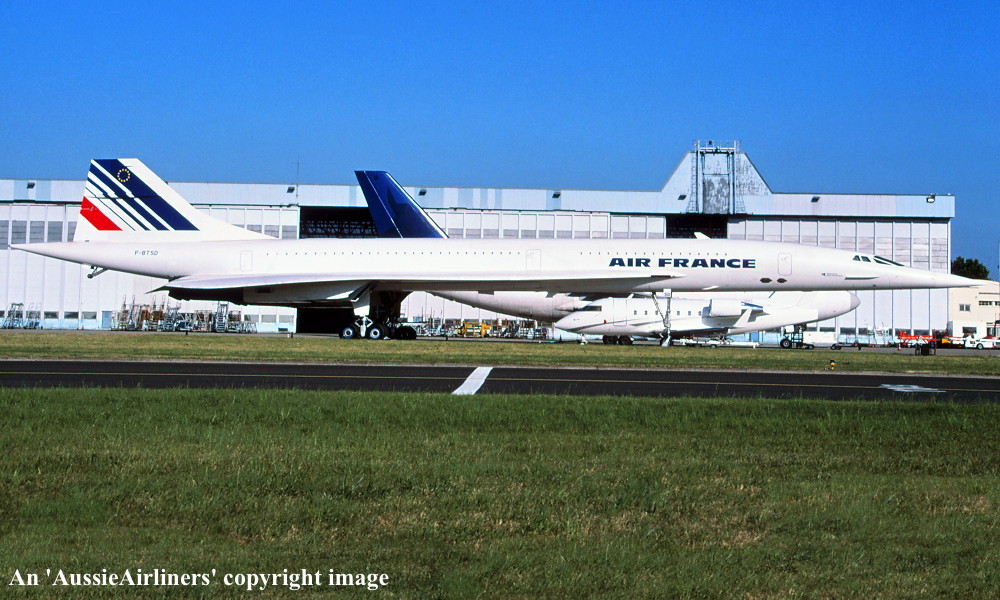 |
F-BTSD. Air France - in the final livery at Paris le Bourget Airport, July 2003. (C. Laugier Copyright Image 1926-046.) |